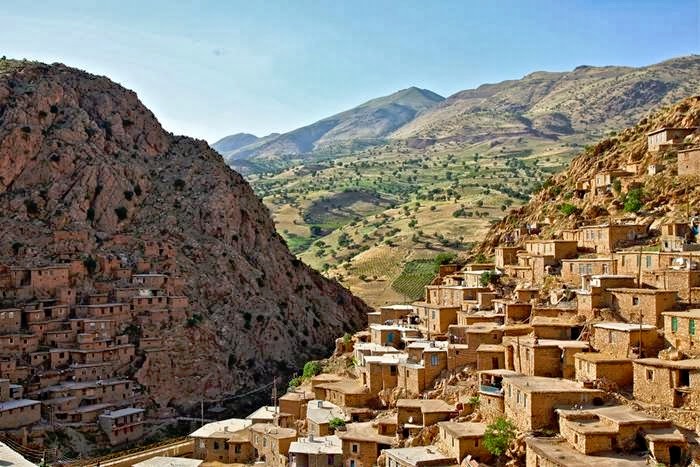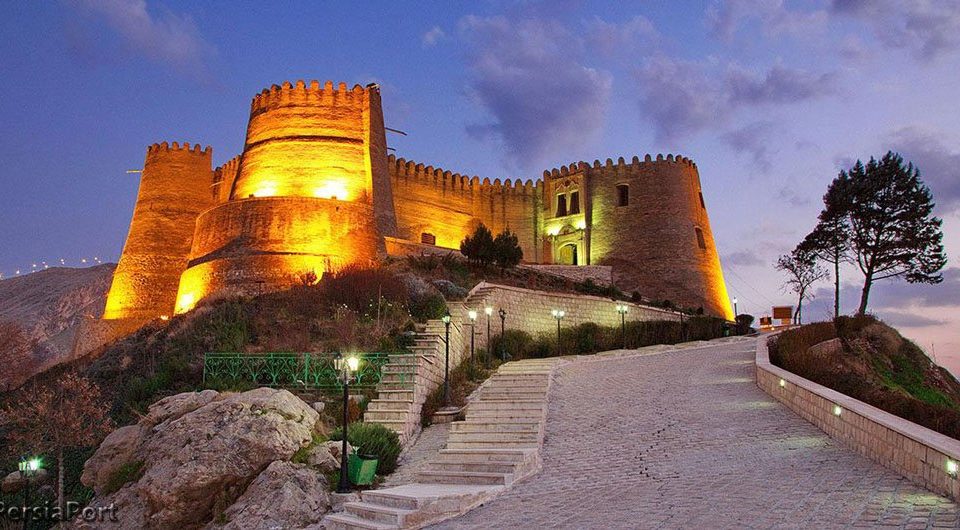Western Provinces
Beautiful Tabriz
Tabriz is the most populated city in northwestern Iran, one of the historical capitals of Iran and the present capital of East Azerbaijan province.
Tabriz contains many historical monuments, representing Iran’s architectural transition throughout its deep history. Most of Tabriz’s preserved historical sites belong to Ilkhanid, Safavid, and Qajar. Among these sites is the grand Bazaar of Tabriz, which is designated a World Heritage Site.
With cold winters and temperate summers, Tabriz is considered a summer resort. It was named World Carpet Weaving City by the World Crafts Council in October 2015 and Exemplary Tourist City of 2018 by the Organisation of Islamic Cooperation.
Reference: https://en.wikipedia.org/wiki/Tabriz



Historical Hamedan
Hamadan Province is an Iranian province located in the Zagros Mountains. Its center is Hamadan city. Hamedan is believed to be among the oldest Iranian cities. It is possible that it was occupied by the Assyrians in 1100 BCE; the Ancient Greek historian, Herodotus, states that it was the capital of the Medes, around 700 BCE.
The province lies in an elevated region, with the ‘Alvand’ mountains, running from the northwest to the southwest. These are part of the Zagros mountain range of Iran.
Attractions:
Tomb of Baba Taher the poet
Ganj Nameh inscriptions of Darius The Great
Tomb of Esther and Mordechai
Ali Sadr (Ardeles) cave
Tomb of Avicenna
Waterfall of Ganjnameh
Stone Lion of Hamedan
Hegmatane (Ekbatan) City of 5000 years ago
Alvand Mountain
Grand Bazaar of Mozafarieh
Reference: https://en.wikipedia.org/wiki/Hamadan_Province



Magnificent Arasbaran
Arasbaran, also known as “Qaradagh” is a large mountainous area stretching from the Qūshā Dāgh massif to the Aras River in East Azerbaijan Province of Iran. Since 1976, UNESCO has registered 72,460 hectares of the region as biosphere reserve with the following general description:
“This biosphere reserve situated in the north of Iran at the border to Armenia and Azerbaijan belongs to the Caucasus Iranian Highlands. In-between the Caspian, Caucasus, and Mediterranean region, the area covers mountains up to 2,200 meters, high alpine meadows, semi-arid steppes, rangelands and forests, rivers, and springs. Arasbaran is the territory of about 23,500 nomads who are mainly living in the buffer and transition zones (2000). Economic activities in the biosphere reserve are mainly agriculture, animal husbandry, horticulture, apiculture, handicrafts, and tourism, but business activities can also be found in urbanized areas.”
More recently, visitors from places as far away as Canada have expressed their amazement with approving words. The planned promotion of the Biosphere to the National Park status may further enhance Arasbaran’s environmental significance.
Arasbaran is home to 215 species of birds, notably the Caucasian black grouse, grey partridge, black francolin, and common pheasant, 29 species of reptiles, 48 species of mammals, notably wild goat, wild boar, brown bear, wolf, lynx, and leopard, and 17 species of fish. There is an effort going on to revitalize the extinct sub-species of Caspian red deer local to the area.
Reference: https://en.wikipedia.org/wiki/Arasbaran



Kandovan Village, a Rocky Architectural Oddity in Iran
Kandovan is an extraordinary ancient village in the province of East Azerbaijan Province, near the city of Tabriz, Iran. With at least 800 years of existence, this remarkable place is inhabited by 670 people and offers scenic beauty for its travelers.
With homes carved inside rocks, some of them 700 years old, the Kandovan village is said to have been partially formed by volcanic remains from strong Mount Sahand eruptions hundreds of years ago.
The intriguing architecture of this village seems to defy all rules and travelers are usually fascinated by its incredible slopes and irreverent paths. Recently a hotel was built, inspired by, and connected to the “style” of the village. The “Rocky Hotel” features beautiful cave interiors with very comfortable living spaces. What we found interesting is that it takes ten months for four people to dig a room. Be sure to check out the video to see how these rooms look.
Reference: https://www.tourismontheedge.com/hidden-places/asia/kandovan-village-iran



Lovely Kermanshah
Kermanshah Province is one of the 31 provinces of Iran. Kermanshah City is the capital of Kermanshah Province is the largest Kurdish-speaking city in Iran.
The province has a rich Paleolithic heritage. Many caves with Paleolithic remains have been surveyed or excavated there. some of these cave sites are located in Bisetun and north of Kermanshah. The first known physical remains of Neanderthal man in Iran was discovered in Bisitun Cave. Do-Ashkaft, Kobeh, Warwasi, and Mar Tarik are some of the Middle Paleolithic sites in the region. Kermanshah also has many Neolithic sites, of which the most famous are Ganj Dareh, Sarab, and Asiab. At Ganj Dareh, the earliest evidence for goat domestication has been documented. In May 2009, based on research conducted by the University of Hamedan and UCL, the head of Archeology Research Center of Iran’s Cultural Heritage and Tourism Organization announced that the oldest prehistoric village in the Middle East dating back to 9800 B.C., was discovered in Sahneh, located in the west of Kermanshah.
The monuments found in Kermanshah show two glorious periods, the Achaemenid and Sassanid eras. The mythical ruler of the Pishdadian is described as founding the city while Tahmores Divband built it. An alternative narrative is that the construction was by Bahram IV of the Sassanid dynasty during the 4th century CE. Kermanshah reached a peak during the reign of Hormizd IV and Khosrau I of Sassanids, before being demoted to a secondary royal residence.
Darius the Great’s inscription at Bisotun, which dates to 522 BCE, lies some 1300 meters high in the mountains and counts as one of the most famous sites in Near Eastern archeology. The site is a UNESCO World Heritage Site and has been attracting visitors for centuries.
Major cities and towns in Kermanshah Province include Kermanshah, Islamabad-e Gharb, Paveh, Harsin, Kangavar, Sonqor, Javanrud, Ravansar, Gilan-e Gharb, Sahneh, Qasr-e Shirin, and Sarpol-e Zahab.
Reference: https://en.wikipedia.org/wiki/Kermanshah_Province



Palangan is a village in Zhavehrud Rural District, in
the Central District…
Taq-e Bostan means “Arch of the Garden” or “Arch made
by stone” is a site…
Falak-ol-Aflak Castle is a castle situated on the top of a large hill…
About US:
Must Discover Iran is a community for introducing Iran and its cultural, natural, traditional, and geographical attractions to those who are interested to visit a wonderful destination.
Find Us:
Contact Info
mustdiscoveriran@gmail.com




